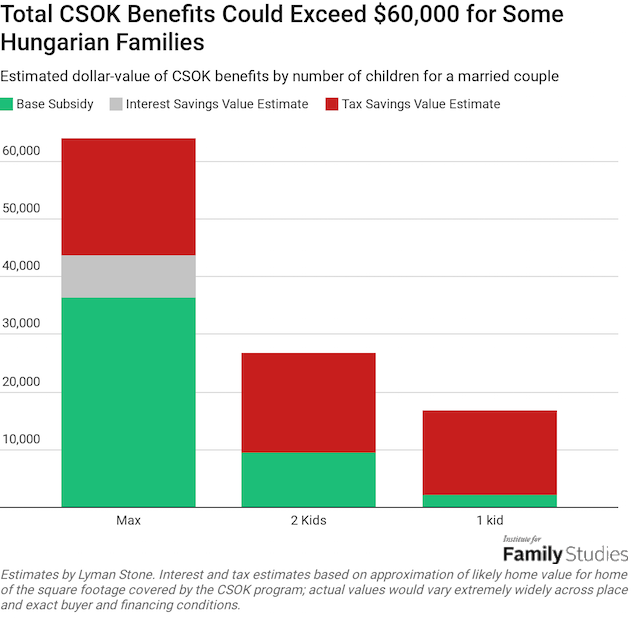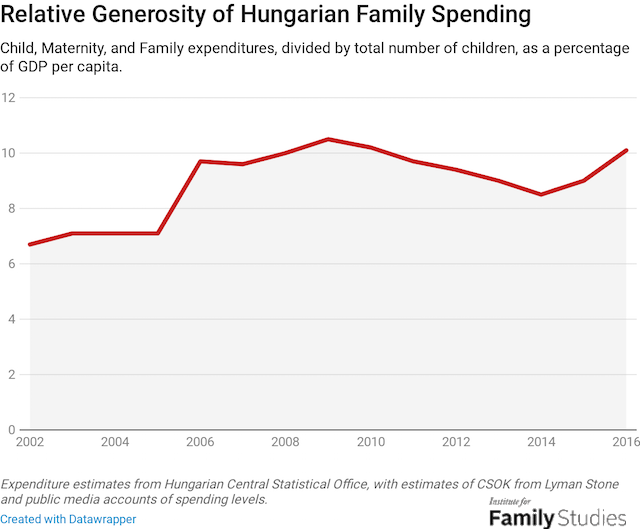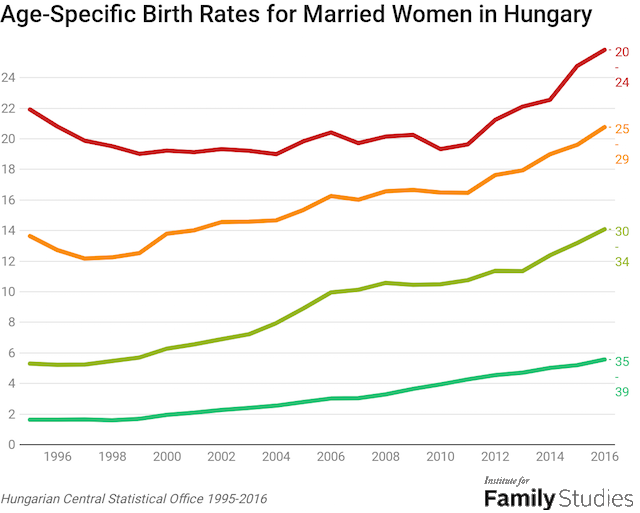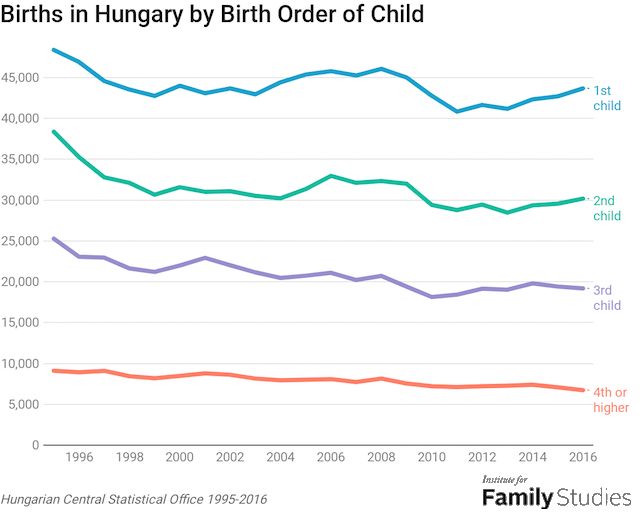Anyone with an understanding of the realities of heredity and ethnicity knows, as the saying goes, that “demography is destiny.” To understand this is easy, to actually act upon these demographic trends is, however, quite difficult. It is very hard to get your citizens to make more babies and even hard to get the “right” ones to do so.
In ancient times, the societies which survived tended to be those who overwhelmingly valued and facilitated child-rearing, including early marriages and a sexual division of labor (women staying in the home). Today, such practices are considered oppressive, but these made perfect sense in their context. As Ezra Pound observed:
An ethic based on a belief that men are different from what they are is manifestly stupid. It is stupid to apply such an ethic as it is to apply laws and morals designed for a nomadic tribe, or for a tribe in the state of barbarism, to a people crowded into the slums of a modern metropolis. Thus in the tribe it is well to beget children, for the more strong male children you have in the tribe the less likely you are to be bashed on the head by males of neighbouring tribes, and the more female children the more rapidly the tribe will increase. Conversely it is a crime rather worse than murder to beget children in a slum, to beget children for whom no fitting provision is made, either as touching their physical or economic wellbeing.[1]
Reproductive and familial imperatives, mandating that the right people reproduce in the right numbers and in the right way, can be found in most traditional societies, and is still reflected in religions such as Hinduism and Judaism. In the Western tradition, the ancient Greeks went furthest in turning the religiously-inspired imperative of reproduction into a self-conscious and rational biopolitics. All this long predates Darwin. The Christians too, at their marriage ceremony, implore God: “Unite them in one mind; wed them into one flesh, granting to them of the fruit of the body and the procreation of fair children.”
In modern times, one cannot however rely on such coercive traditional cultural norms to maintain fertility rates. Most people rebel against them (perhaps, in a few centuries, we will find that small groups that manage to maintain traditional fertility, such as the Mormons and Orthodox Jews, will inherit the Earth). Moderns find it difficult to raise fertility.
The French were greatly concerned about their demographic decline in the nineteenth century, by which they went from being Europe’s preeminent power to merely one great power among several, vulnerable for the first time to German hegemony. France’s various pro-natalist policies were quite ineffective however, although perhaps these eventually bore fruit with the country’s strangely long-lasting postwar baby (France maintained replacement-level fertility long after that it had collapsed in most of the rest of Europe).
Only a few modern countries, it seems to me, have been successful in raising or maintaining fertility: these include Fascist Italy, the Third Reich, and Israel. In each case, pro-natalist policies are not taken in isolation, but reflect an encouraging total context in which children are valued by the entire society and culture, as enabling the survival and power of a particular people.
Since the eclipse of Darwinism after 1945 and of communism after 1989, few European countries have really attempted to raise their fertility rates. Today, serious efforts are being made in more and more countries swept by “national-populist” revolutions: namely Hungary, Poland, and most recently Italy. Hungary is the country which has undergone the most profound and lasting of these revolutions since Prime Minister Viktor Orbán came to power in 2010. I would like to go over Hungary’s various natalist policies and consider their degree of success.
Lyman Stone of the Institute for Family Studies has written an impressively comprehensive account of Hungary’s demographic policies and evolution. In it he points out that Orbán has organized a political and indeed constitutional refounding in Hungary centered on the family and descendance:
[I] n 2011, Hungary adopted a new, and extremely controversial, constitution. Criticized by many international organizations as consolidating too much power around the ruling party, the document was Hungary’s first democratically produced framework for governing. It includes statements such as, “We trust in a jointly-shaped future and the commitment of younger generations. We believe that our children and grandchildren will make Hungary great again,” and, “We hold that the family and the nation constitute the principal framework for our coexistence,” and “We bear responsibility for our descendants.” It also includes strong language committing the country to historic national heritage, Christian identity, and community values. Moreover, Article L of the constitution, which, again, is the basis of Hungarian government today, says,Hungary shall protect the institution of marriage as the union of a man and a woman… and the family as the basis of the nation’s survival. Hungary shall encourage the commitment to have children. The protection of families shall be regulated by a cardinal Act.
Orbán’s Hungary then has to some extent rejected a purely individualist conception of democracy, which sees human beings only as fleeting and interchangeable atoms, to a notion of the citizen as incorporated in a particular family, a particular nation, and a particular chain of generations. In doing so, Orbán has recognized basic biological realities and moved towards what he calls an “illiberal democracy.”
Personally, I prefer the term “communitarian democracy.” But in any event, the Hungarians have constitutionally founded their state on the basic Aristotelian principle of community: that one can only consider individual well-being starting from the well-being of the whole, of the community of which he is necessarily a part, and which will outlive him.
Since 2011, Hungary has adopted a wide array of measures to boost fertility and support families. Stone writes:
First of all, in 2011 and 2012, Hungary changed the structure of their tax exemptions for children, providing new deductions that saved families between $400 and $1,500 on their tax bill per child, depending on how many kids they have. A similarly-generous deduction in the U.S., given our higher incomes and our different tax rates, would mean the introduction of a between $4,000 and $16,000 per-child tax deduction.
Previous research by academics suggests that this increased tax exemption for kids probably did boost birth rates. They estimate that the policy change caused between 6,000 and 18,000 more births from 2011 to 2013.
Stone notes that support to families has reach an unprecedented level with the introduction of a new family-housing subsidy in 2015:
In 2015, the government of Hungary announced a major new policy: families would be given generous subsidies to buy or build new homes, and the subsidies would scale up based on their marital status and the number of children they had. This “Family Housing Allowance Program,” or CSOK (the abbreviation of the program’s Hungarian name), gives a maximum benefit to married couples with three or more children, equivalent to a $36,000 grant to buy a new home, alongside a major value-added tax deduction for each home, and a capped-interest loan for part of the home value. These interest and tax benefits are probably worth around another $15,000 to $50,000 per family, depending on the house they buy and their likely loan terms. In other words, for a married couple buying a new house with at least three kids, the value of their total payout could run anywhere from $50,000 to $80,000. Meanwhile, for a couple with just two kids, the payout could be from around $18,000 to $35,000. In other words, that extra kid earns the family somewhere between $15,000 and $62,000 extra dollars. Given that the average salary in Hungary is only around $11,000 to $15,000 per year, an equivalently-impactful subsidy for Americans, based on our higher incomes, would need to amount to somewhere between $40,000 and $250,000.Imagine the U.S. government offered a $200,000 payout to have a third child. Do you think some people would be more likely to have that extra child? My guess is that they definitely would. I’ve written in the past that financial incentives for childbearing tend to be very expensive compared to the modest number of births they actually induce: most financial incentives are not highly effective at promoting sustainable fertility increases.. . . [N]one of the policies I reviewed for the U.S. quite approach the magnitude suggested here: the very largest, most bold proposal for the U.S. that I’ve ever seen would be at the lower-end of the range for a Hungary-style proposal. No American policymaker has ever proposed something remotely as generous as what Viktor Orban’s Fidesz party has recently done for Hungary’s families and children. I said a similar thing in a previous piece about Poland’s right-wing populist government, which virtually ended child poverty through their generous family-support policies. Europe’s populists have babies on their mind.
The sheer scale of these programs is impressive indeed. Besides their electoral benefits (voters do love “gibs”), this is clearly an indicator that Orbán’s government is seriously and sincerely motivated to reverse Europe’s demographic decline.
This begs the question: are Hungary’s pro-natal programs working? So far, despite massive incentives, the effect has been only moderately positive. According to Eurostat, the Hungarian fertility rate fell to 1.25 in 2012 (the lowest in the EU) and has since risen to 1.53 as of 2016 (close to the, insufficient, EU average). A 22.4% increase is quite significant. Stone provides the following graphs showing an increase in fertility at various age levels (significant as the Hungarian population is aging):
There is no immediate correlation between the various policies adopted in 2011 and 2015 and the fertility rate, although one should note that fertility trends tend to change over longer periods of time and depend on other extraneous factors, such as the economic situation and cultural climate. Furthermore, Stone observes: “Hungary’s policy changes, at least through 2013 (the most recent data available), did not result in rising fertility ideals.”
The Hungarian government argues however that they had made major progress in restoring families, namely with a marked increase in marriages and decline in divorces and abortions:
In recent years, finding the proper response to Europe’s demographic decline has become one of the biggest sources of disagreement between European and Hungarian politics. While Brussels bureaucrats and the European liberal, pro-migration mainstream see immigration as the necessary and unavoidable solution, the Hungarian government stands committed to the idea of increasing birth rate through more effective family support measures….Since 2010, when Prime Minister Orbán’s government took office, Hungary’s demographic policy has shown real results: by 2017, abortion numbers had dropped by more than a third, from 40,449 to 28,500, divorces saw a marked decline (from 23,873 in 2010 to 18,600 in 2017), and the number of marriages had risen by some 42 percent.On top of this, over the last seven years, 83,000 families have received home purchase subsidies, households have saved 1.9 billion HUF (6m EUR) on account of family tax preferences, and the number of places in crèches has increased by 50 percent.
And indeed this appears to have worked, whatever the reasons. As Stone points out:
[I] n Hungary, the rise in the age of first marriage, which has been so inexorable in other countries, has actually stalled out and perhaps started to fall. The country is not just experiencing a fertility spike; Hungary is winding back the clock on much of the fertility and family-structure transition that demographers have long considered inevitable.
Stone is bullish about Hungary’s prospects largely because stable marriage are a primary condition for the decision to have children. He concludes:
Hungary’s fertility rates are still extremely low: only about 1.5 children per woman. The government is spending huge amounts of money and will probably never reach replacement-rate with this strategy. However, Hungary is experiencing some fertility gains, probably at least partly as a result of a basket of policy changes including tax preferences, cash grants, loan subsidies, constitutional protections, and costly political signaling. But to the extent these policies are working, they are effective because they are not being used in isolation, but rather together as a whole concert of pro-natal policies and cultural nudges. And they are working because they induce marriage, not simply childbearing, and marriage helps boost long-run fertility, not just birth-timing.
Surely the restoration of marriage is a fundamental positive development. By holy matrimony, husband and wife live with and love one another in harmony, just as the individual and the family must learn to live with and love the wider society. Not for nothing did Saint John Chrysostom say: “The love of husband and wife is the force that welds society together.” And Homer (that’s the primordial Greek poet, not the overweight nincompoop dad Matt Groening has replaced “Homer” with in our mass consciousness): “There is nothing nobler, nothing lovelier than when man and wife keep house together with like heart and with like will. Their foes repine, their friends rejoice, but the truth of it all is with her and him.”[2]
This is therefore a good sign for the long term. Indeed, the Hungarian government is strengthening its efforts. Just now there is a national consultation under wayasking Hungarian citizens what they think on various proposals to strengthen the family:
The questions relate to the introduction of full-time motherhood for women raising minimum four children, the two-thirds protection of grants provided for families raising children, and the provision of support for family members looking after sick children at home. . . .The government is seeking to find out, inter alia, whether the people agree that the problem of Hungary’s declining population should not be remedied with immigration, but with more intensive family support measures; whether the people agree that the new family support programmes will continue to remain tied to employment; and whether young married couples should be given support with the initial phases of their independent married lives.
I note that the particular major of having family support be “tied to employment” helps to ensure that anti-social elements’ reproduction is not subsidized. I would wager this means these programs disproportionately benefit indigenous Hungarians, to the detriment of Gypsies.
The issue here is not distaste for or persecution of this or that minority, but whether Europeans will even retain their homelands in the twenty-first century. As Orbán recently noted in a remarkable speech – which will hopefully not be studied by future historians as one of those “prescient but ignored” historical document – globalist elites are “slowly but surely turning indigenous Europeans into a minority” in their own countries.
The Hungarians are putting their demographic struggle in a wider European context. The government says: “The upcoming national consultation seeks citizen input on the foundations of a powerful family support scheme, hoping to send a straightforward message that Europe cannot be revived without strengthening families.” Let’s hope the rest of Europe is listening. Whatever the results of these particular Hungarian programs, I have no doubt that our demographic renewal cannot occur without two things:
- Experimentation of various programs and methods across Europe in our various nation-states.
- A general European cultural revolution whereby we all lastingly come to recognize the importance of the family and of biological reality.
These things take time. By way of comparison, I observe that it took many decadesfor Israel’s pro-natalist policies to bear fruit, recently overtaking Arab fertility, a remarkable achievement.
Europeans then have their work cut out for them, the work of a century at least. In the meantime, God bless the Hungarians!
Notes
[1] Ezra Pound, “The Serious Artist,” The Egoist, 1913.
http://www.unz.com/article/the-demographic-revolution-in-hungary/







